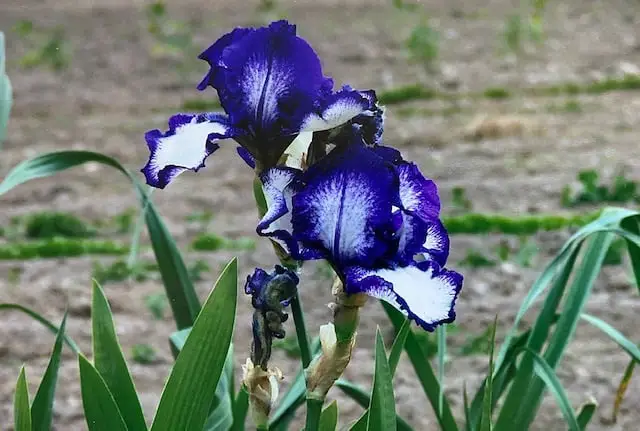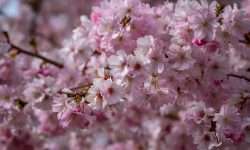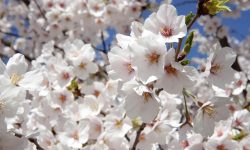Orchids and Irises are actually related. They are both in the family Iridaceae. The main difference between the two is that orchids have 3 petals and 3 sepals while irises have 2 of each.
Also, irises typically have 6 stamens while orchids usually have only 1-2.
Orchids and Irises might not seem like they have much in common at first glance, but believe it or not, these two flowers are actually related! Orchids are a part of the Asparagales order, which also includes irises. This means that these two plants share a common ancestor.
Although they may look different now, they still have some similarities in their structure and growth habits.
One of the most notable differences between orchids and irises is their size. Orchids can range from small and delicate flowers to large and showy blooms, while irises are typically smaller in size.
Another difference is that orchids often grow on trees or other tall structures, while irises usually grow closer to the ground.
Despite their differences, orchids and irises share some key similarities. For one, both types of plants produce beautiful flowers that come in a wide range of colors.
They also both prefer well-drained soil and full sun exposure. When it comes to care, both plants need to be watered regularly but should never be allowed to sit in water for too long.
If you’re looking for a unique addition to your garden, why not try growing both an orchid and an iris?
You’ll get the best of both worlds with these beautiful and interesting plants!

Credit: whathappensonthehomestead.com
Is an Orchid a Type of Iris?
Iris is a genus of flowering plants with showy flowers. It takes its name from the Greek word for a rainbow, which is also the name for the Greek goddess of the rainbow, Iris. Orchids are a type of flowering plant that includes more than 25,000 species in 880 genera.
They are often characterized by their large, showy flowers and their unusual shapes. The most common type of orchid is the phalaenopsis, which is native to Southeast Asia.
What Flowers are Related to Irises?
There are many flowers related to the iris, as they are all part of the Iridaceae family. This includes gladiolus, freesia, crocus, and rain lily. The iris itself is named after the Greek goddess Iris, who was the messenger of the gods and was often depicted with rainbow-colored wings.
What Flower is Similar to an Orchid?
There are many flowers that share similarities with orchids. Some of the most common include: lilies, irises, and daffodils. Each of these flowers shares certain characteristics with orchids which make them appear similar.
For example, all three of these flowers have showy blooms and large petals. Additionally, they come in a wide range of colors including white, pink, purple, and yellow. However, each of these flowers also has unique features that set it apart from orchids.
Lilies have long stems with multiple blooms while irises have dagger-like leaves. Daffodils are known for their trumpet-shaped blossoms. When trying to identify a flower that is similar to an orchid, it is important to consider both the physical appearance and the cultural significance of the plant.
Are Orchids And Lilies Related?
Orchids and lilies are not related. They are both flowering plants, but they belong to different plant families. Orchids belong to the Orchidaceae family, while lilies belong to the Liliaceae family.
The Orchid and The Dandelion: Why Some Children Struggle… | Tom Boyce | Talks at Google
Is an Iris an Orchid
Iris is a genus of about 300 species of flowering plants with showy flowers. It takes its name from the Greek word for a rainbow, which is also the name for the Greek goddess of the rainbow, Iris. Some sources state that the name refers to the wide variety of flower colors found among the many species.
The genus includes both wildflowers and cultivated plants.
Orchids are a diverse and widespread family of flowering plants, with blooms that are often colorful and fragrant. The Orchidaceae have about 28,000 currently accepted species, distributed in about 763 genera.[2]
The determination of which family is larger is still under debate, because verified data on the memberships of such enormous families are continually in flux. Regardless, the number of orchid species nearly equals that of bony fishes and surpasses that of vertebrate animals.
Orchid Origin And History
Orchids have a long and storied history that can be traced back thousands of years. The first recorded instance of an orchid was in 1530 BC, when the ancient Egyptians depicted them on tomb walls. Orchids also played a role in Greek mythology – they were said to be the favorite flowers of the goddess Aphrodite.
The first European to document an orchid was Swedish naturalist Carl Linnaeus, who classified them in 1753. Since then, there have been countless new species discovered and documented by scientists all over the world. Today, there are over 25,000 different kinds of orchids!
Orchids are native to nearly every continent on Earth except Antarctica. They can be found growing in the wild in tropical rainforests, as well as temperate regions like Europe and North America. Many people cultivate orchids as houseplants, and they’re also a popular choice for floral arrangements.
Whether you’re admiring them in a museum or enjoying them as part of a bouquet, it’s easy to see why these fascinating flowers have captivated people for centuries.
Plants Similar to Orchids
Orchids have a reputation for being difficult to grow, but many varieties are actually quite easy to care for. If you’re looking for a plant that’s similar in appearance to an orchid, but a little easier to grow, consider one of these five options.
1. African violets (Saintpaulia ionantha) are small plants with velvety leaves and beautiful blooms in shades of purple, pink, red, or white.
They’re native to Tanzania and Kenya, and they thrive in bright indirect light. Water African violets when the soil is dry to the touch, and fertilize them monthly with a half-strength fertilizer solution.
2. Begonia Rexes (Begonia rex-cultorum) are another option for those who want an eye-catching plant with colorful foliage.
These begonias come in a wide range of colors and patterns, including green, bronze, maroon, and silver. They prefer bright indirect light and moist soil; water them when the top inch of soil feels dry. Fertilize every other week with a half-strength fertilizer solution during their growing season (spring through fall).
3. Bromeliads (Bromeliaceae spp.) are striking plants that come in a variety of shapes and sizes. Their leaves are often brightly colored or patterned, and they produce long-lasting blooms in shades of pink, yellow, orange, or red. Bromeliads need bright indirect light and well-drained soil; water them when the top inch of soil feels dry to the touch.
Bromeliads don’t require much fertilizer; once every month or two should be sufficient if you’re using a half-strength fertilizer solution..
4. Calatheas (Calathea spp.) are tropical plants that feature bold patterns on their leaves; some popular varieties include zebra plant (Calathea zebrina), peacock plant (Calathea makoyana),and rattlesnake plant (Calathea Lancifolia).
They thrive in humid environments with filtered sunlight; water them when the top inch of soil feels dry to prevent their leaves from browning..Fertilize calatheas every other week during their growing season with a half-strength fertilizer solution..
5 . Nephthytis(Nephthytis spp.) is an ideal choice for those who want an easy-to care -for plant similar to an Orchid . It has long ,pointed leaves that can be variegated or solid green ,depending on the variety .Like most houseplants , it prefersbright indirect sunlight but will tolerate lower light levels .
Is there a familial relationship between Amy Adams and Sophia Lillis?
Despite their striking resemblance and shared talent in the acting industry, there is no evidence to suggest an amy adams and sophia lillis familial connection. Both actresses have captivated audiences with their performances, but their similarities appear to be purely coincidental.
Iris Orchid Color
When it comes to orchids, there is a seemingly endless variety of colors to choose from. And while all of them are beautiful in their own way, the iris orchid really stands out with its unique coloring.
As its name suggests, the iris orchid features shades of purple and blue that resemble the petals of an iris flower.
But what makes this orchid even more special is the way those colors are blended together. Rather than being two-toned, the iris orchid has a gradient effect that creates a truly one-of-a-kind look.
If you’re looking for an orchid that will really make a statement, the iris orchid is definitely the way to go!
Conclusion
Orchids and Irises may look similar, but they are actually not related. Orchids are part of the Orchidaceae family, while Irises are part of the Iridaceae family. The two families are quite different, but there are a few similarities between them.
For example, both orchids and irises have showy flowers that come in a variety of colors. However, orchids tend to be more delicate than irises and require more care.






